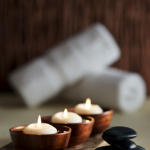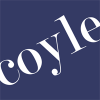 How can busy spa operators take their guest experience, so integral a part of their businesses, to the next level?
How can busy spa operators take their guest experience, so integral a part of their businesses, to the next level?
Creating a guest experience audit, in which key standards are established, is the only practical and surefire way to gain an understanding of where you are and how to get where you want to be. Too often, performance benchmarks become moving targets, interpreted individually by the staff or mitigated by the current manager’s philosophy.
After many years providing consulting services and designing mystery shopping programs for the hospitality industry, including for many day spas across the country, Coyle Hospitality is happy to provide some practical and useful tips.
And while quality assurance audits from professional mystery shoppers will provide the most actionable results, you can even solicit friends to provide feedback, so long as you administer your evaluations consistently and without prejudice.
1. Make the Time: Too often, busy spas just never set aside the time to discuss what needs to happen every time the phone rings or a guest walks in, or out of, the front door. Start with something simple like an inquiry call and come up with 5, 7, or 10 things that absolutely have to happen. Write these down, put them by the phone and have your staff score themselves. You might be surprised to find out that your staff is hesitant to use a guest’s name and needs practice. You also might find out that your opening script sounds, well, like a script.
2. Take to the Internet: Go to Google, start a search and click on your link. That is where your guest’s experience starts. Coyle Hospitality’s extensive research, seen here, shows that potential clients want detailed offerings of your services, including the pricing. If your services menu is hard to find and download, is outdated or is absent pricing, you are not providing an optimal experience. Remember, it isn’t only your next guest that’s on your site, it’s also their loved one looking to buy a gift certificate. Today’s consumers demand transparency and they expect a map, pictures of the facility and easy-to-find phone numbers.
3. Create standards: Now that you’ve focued on an easy area like the Telephone Call, start moving onto more complex interactions like Check-in, Check-out and Facility Cleanliness. The good news is that you get an immediate benefit by simply writing down your vision and mission. When formulating the standards, think about things that really affect the guest.
We recommend that you start with four very important categories that address how the guest sees you:
- Service: The tasks guests expect to be completed
- Engagement: How the guest perceives your staff’s attitude and demeanor
- Facility-Cleanliness: Anything your guest sees, touches or hears
- Capability: How well the tasks were completed
4. Create Actionable Standards: Your benchmarks should be binary and specific, yielding a ‘yes’ or ‘no’ answer. A standard that asks the beholder to rate the quality of the music on a scale of 1-5 will miss the point that it is too loud. State the benchmark clearly, in a yes or no question, and the result will be either a hit or miss. Percentages and numerical scores are pretty meaningless. Our referred professional spa mystery shoppers’ experiences have shown time and again that knowing the things you miss repeatedly is a lot better than churning out percentages.
Along these lines, avoid standards that combine two separate attributes. For instance, it’s best to separate service components. Rather than asking, “Did the massage therapist thank you and offer water?” create two separate standards that evaluate each of these components (Service and Engagement).
5. Keep the standards list compact: The minute you involve others in creating spa operating standards, the list tends to grow to uncontrollable lengths. A couple of good ways to determine whether or not to include a standard:
1. Does it really matter to the guest?
2. Can it realistically be achieved?
Ask yourself some form of the following question: “If I were to demand that my massage therapists do only five things with every single guest, what would those five things be?” Start with those five, give it a day, and come back to the list. This forces you to keep the list meaningful. A long list of standards will create a flat bell curve. The key to success is finding the outliers.
6. Eliminate subjectivity: There will always be a subjective element to guest experience audits, of course. After all, you’re trying to quantify an experience. But you can quantify parts of the experience to a meaningful degree. A statement from a mystery shopper that says something like, “the esthetician was friendly” yields far less useful results, than “the ethestician did not make eye contact when she thanked me.” You can actually do something with the latter.
7. Allow for narrative: A few open-ended questions that start with “what” or “why?” will provide amazing context to some key issues, which is badly needed when you’re measuring guest experience and customer service. Some great open-ended questions that should only be answered in words are:
What would you improve if you were the owner of this spa?
What was the best part of the experience?
Did your impression of the spa change from when you arrived to when you departed? Why?
8. Refine, Refine, Refine: Invite some input from stakeholders after a BETA run of no less than 10-12 evaluations. If you scored 100% on every standard, you set the bar too low. If your checklist score is a 60%, but the experience was really good, you need to bring the standards closer to the narrative. One caution: After the first round of changes, wait at least 6 months for the next round. You want apples to apples data and you want consistency. Chances are you will have some new staffmembers whose buy in will be important; include them.
9. Memorialize and Practice: Your standards need to be in your new hire documentation; show them that the right way is pretty simple. Have your staff shop the competition once in a while using your standards. Make next week the week that you practice ending all calls with the guest name, and you will be surprised how the staff actually performs. Harness the wonderful energy of Peer Modeling (See #10).
10. Document the superstars: Peer Modeling is 100 times more effective than giving someone a list of standards and telling them to achieve every one. If you get a mystery shop showing your esthetician hitting all 15 standards, provide some recognition and document the story. That will be enough to show that first and foremost, it can be done, and you will be memorializing the heroes for years to come (and your next opening!).
If you would like help developing metrics or standards for a guest experience or brand audit, contact Coyle Hospitality. We have accomplished this for more than 200 hospitality companies. For more information on how Coyle’s quality assurance consulting services and mystery shopping program-design services can help your spa create guest experience audits, click here.













